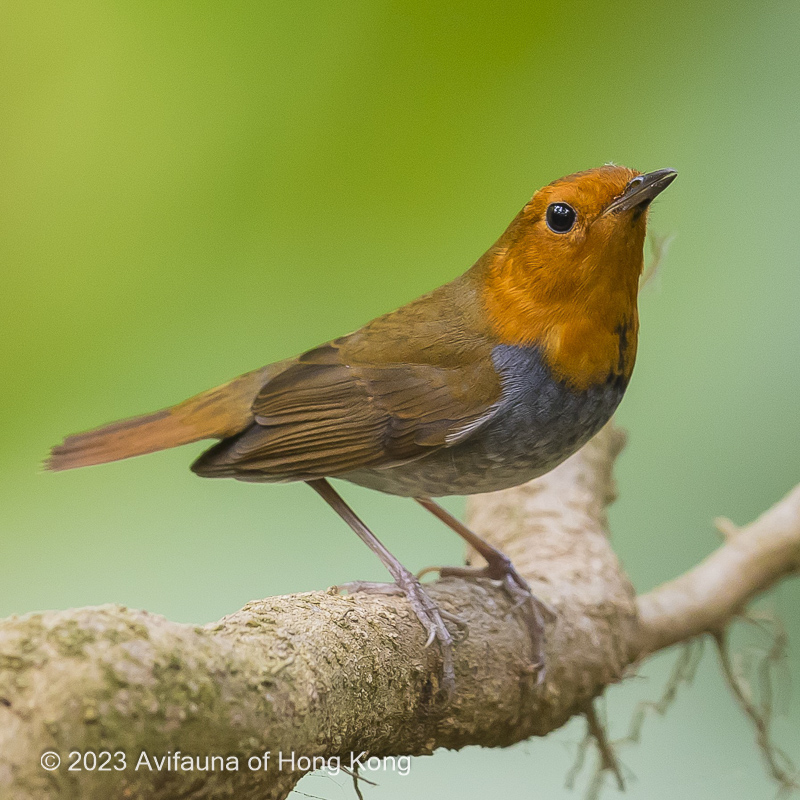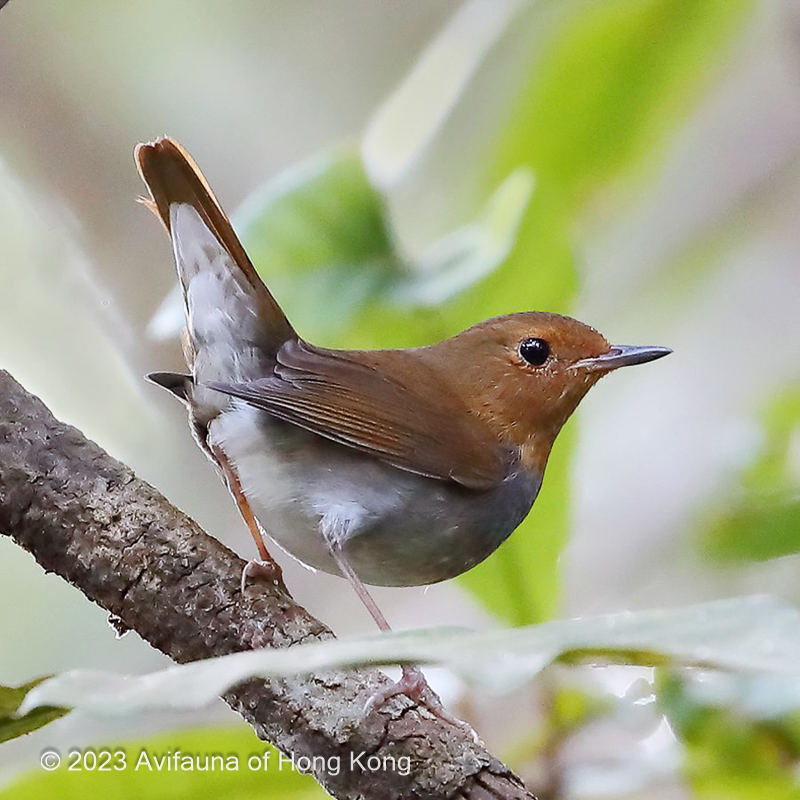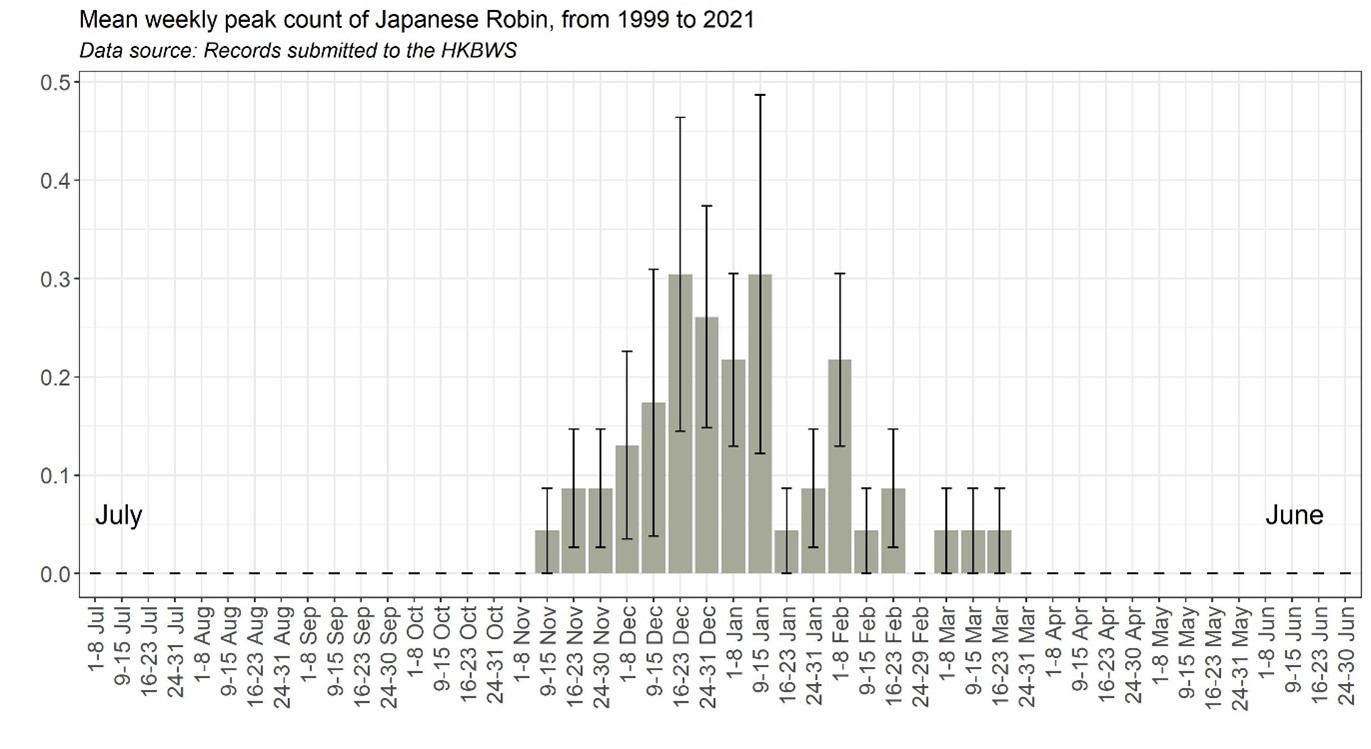Japanese Robin Larvivora akahige 日本歌鴝
Category I. Rare winter visitor with occasional records of passage migrants in closed-canopy woodland.
IDENTIFICATION

Dec. 2019, Matthew Kwan.
14-15 cm. The male has brown crown and upperparts with a rufous tail. The face, throat and upper breast are rufous orange; in fresh plumage, a sooty band separates the orange upper breast from grey lower breast and flanks. The belly and vent are white. Bill black. Legs pink.

Dec. 2019, Michelle and Peter Wong.
The female is a duller version of the male and lacks the sooty breastband.
VOCALISATIONS
The call is a high-pitched ‘tsee’ or ‘tsip’ uttered singly or in a short series of two to five notes.
Similar to Rufous-tailed Robin in character, the song is a simpler and consists of a trill that begins with one or two short notes. The song heard in HK is low-intensity.
DISTRIBUTION & HABITAT PREFERENCE
Found mainly in mature forest in the central New Territories, often near streams, with most reports from Tai Po Kau, Ng Tung Chai and, more recently, Tai Lam Country Park. There have also been occasional records from Po Toi, Lung Fu Shan and Sunset Peak.
OCCURRENCE
Rare passage migrant and winter visitor. There were ten winter records between 1962 and 1998, mainly at Tai Po Kau and Ng Tung Chai. All were of single birds apart from three at Ng Tung Chai during 4-7 February 1995, and two at the same site on 22 December 1995. There were no records from 1999 to 2006 apart from one at Tai Po Kau on 8 January 2005. Since then, however, it has been noted every winter except 2013/14. All records have been from 12 November to 29 March, with 50% occurring between the second week of December and the second week of January (Figure 1).
Migrant birds were noted at Po Toi during 20-21 November 2007 and on 19 November 2009. Most records, however, are in midwinter; some involve long-staying birds e.g., up to four at Tai Lam Country Park from 6 December 2019 to 17 February 2020.
Total annual counts usually involve one or two birds only but there have been recent high counts of five in 2019/20 and 2020/21, largely due to increased observer activity at Tai Lam Country Park.
BEHAVIOUR, FORAGING & DIET
Shy and elusive, often detected by its call. Tends to keep in the undergrowth where it forages for insects.
RANGE & SYSTEMATICS
Monotypic. Breeds on south Sakhalin, the south Kuril Islands and from Hokkaido to Kyushu in Japan. It winters largely in south China in Taiwan, Fujian, Guangdong, Guangxi and Hainan, with small numbers in Vietnam.
CONSERVATION STATUS
IUCN: Least Concern. Population trend stable.
Figure 1.

Collar, N., J. del Hoyo, G. M. Kirwan, and D. A. Christie (2020). Japanese Robin (Larvivora akahige), version 1.0. In Birds of the World (S. M. Billerman, B. K. Keeney, P. G. Rodewald, and T. S. Schulenberg, Editors). Cornell Lab of Ornithology, Ithaca, NY, USA. https://doi.org/10.2173/bow.japrob1.01

